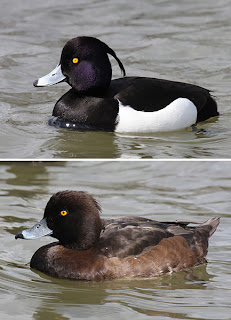As you can tell with my other recent
posts, I’ve been visiting London, and I felt that if I was in the
city, it was a total necessity to drag my sister to visit the Natural
History Museum - a place I think I last visited when I was at school
in about 1984.
I was full of excitement, that
quickly evaporated at the size of the queues. But they were moving
quickly, and we were soon inside, confronted with the still
astonishing Great Hall and its iconic brachiosaurus – inevitably
seeming rather smaller than I remember it. It was surrounded by folk
doing a Crystal Maze style trip round the skeleton in order to get
into the Hall of the Dinosaurs, so my sister and I decided to head to
the top of the museum and work our way down.
I’d forgotten that there was actually
nothing at the top apart from the ancient tree trunk section. And on
the level down it was the fascinating, but rather old fashioned,
mineral exhibition with the gem-mier stuff in the exciting named
“Vault”, the “Treasure Room” which was enjoyable, and an
evolution exhibit that as ever my sister and I walked through the
wrong way round.
It’s the big exhibits on the ground
floor that are the problem. The blue zone has a marine life
exhibition full of often model exhibits, very badly labelled and very
confusing to look at. Everything is static, and lifeless, and a
common recurring theme of downstairs was how dingy and threadbare
everything looked. The lack of big sharks was, in my sister’s view,
unforgiveable. And a model giant squid nailed to the ceiling was no
substitute.
Things get worse in the overcrowded and
cluttered Hall of the Whales. Sea mammals mix awkwardly with land
mammals, and the exhibit is impossible to find you way out of. We
were looking for the big cats, and it took three circuits of the
place before we got out.
I did love the expression on the blue
whale’s face however, and spent a deal of time pretending to be the doomed
sperm whale from “Hitch-hikers Guide to the Galaxy”.
The big carnivores were the most
knackered looking of all the displays. The museum has taken an
ethical view – correctly – that it is not going to seek out any
new big predator skins from any taxidermy specimens, and the animals
are thus rather faded as a result. It was great fun drawing the tiger
though, with the pencil and paper provided.
“The Cocoon” however was very
different. This is the invertebrate exhibit, and consists of a
wonderful curving structure internal to a modern concrete and glass
section of the museum. You get an exciting view of the outside of it,
and then you actually enter it to see where I think the museum views
its future – digital and visual exhibits replacing actual
specimens, with more emphasis on how scientists go about their work
of research and taxonomy. But as a lover of butterflies and
dragonflies, I was sad to not see more on view, and the ones that
were unforgivably badly labelled again. Or rather, not labelled at
all, or a sort of laminated folder telling you what was in the cases
presented to you by a floppy haired assistant.
What’s wrong with putting a label
next to the thing you are looking at? Is it so difficult?
However, in general, this is by far the
best part of the museum, and presumably when more money becomes
available, other areas will be likewise transformed. Although my
sister would say you can put all those rats in spirit a long way out
of sight, incredible resource though the spirit collection is.
The shop has moved to the other side of
the hall, and if you have a pressing need for a pteranadon glove
puppet, like my sister had, is ideal!
All in all, it was great to visit again
after so long, but it felt so staid and conservative for the most
part. But I’m curious to see how they can “get with the times”
and still actually fulfil the public desire to see exhibits of real
animals, or whether they can educate the public away from this
perhaps ethically unsustainable approach to curation.
Copyright Cream Crackered Nature 22/10/2013
 |
| A multitude of different coloured diamonds in the gem vault |
 |
| Cocoon exterior 1 |
 |
| Cocoon exterior 2 |
 |
| Cocoon interior |










































